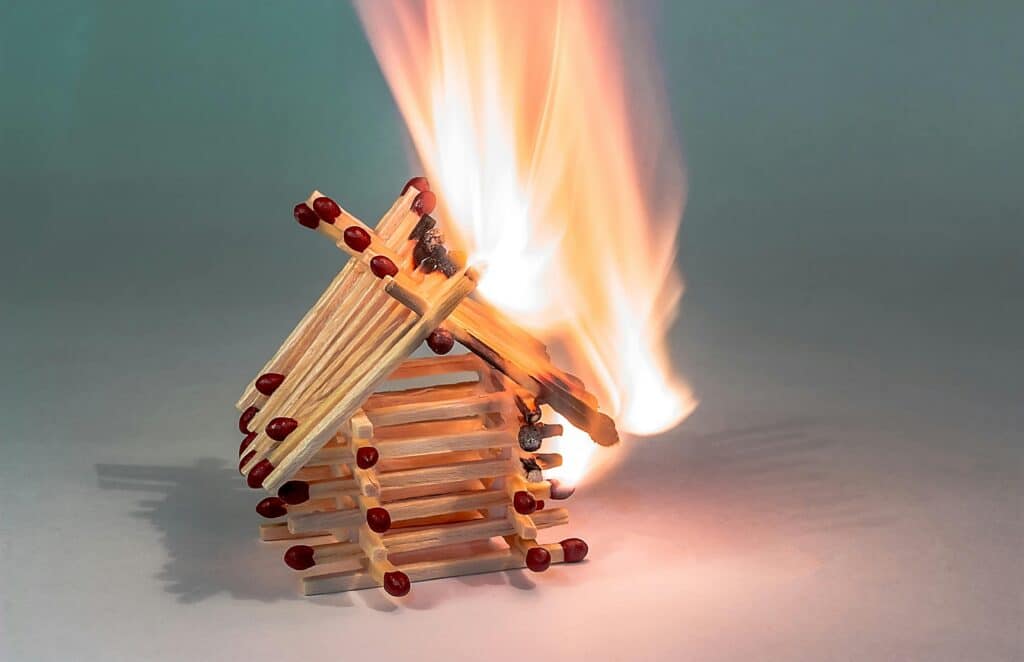
How fires get much hotter than you may realize.
House fires are devastating events that can lead to significant property damage at best, and loss of life at worst.
According to the National Fire Protection Association, fire departments in the United States respond to an estimated 350,000 residential fires every year. It’s not just the flames themselves that are dangerous, but the radiating heat as well.
The Temperature Gradient in a House Fire
When discussing the heat of house fires, it is important to know that the temperature varies dramatically from floor to ceiling.
At floor height, temperatures can start at around 100 degrees Fahrenheit. This may not sound like much. However, heat rises, so that is the coldest we are talking here.
As we move to eye level, the temperature reaches up to 600 degrees Fahrenheit. This is hot enough to cause severe burns upon contact with the skin or ignite combustible materials nearby.
At ceiling height, temperatures soar to 1,500 degrees Fahrenheit or higher. Rooms with abundant fuel sources for the fighter will keep the flames burning.
Preventing House Fires: Tips for a Fire Safe Home
House fires are largely preventable with a few safety precautions. Here are some tips to make your home more fire-resistant and increase fire protection:
- Stay in the kitchen while cooking: Cooking fires are the leading cause of home fires in the United States. Never leave cooking food unattended.
- Check electrical appliances: Faulty or old electrical appliances can lead to electrical fires. Regularly inspect and replace any worn or damaged cords.
- Keep combustibles away from heat sources: Store combustible materials away from stoves, heaters, and other heat sources.
- Install smoke alarms: Ensure that your home is equipped with smoke alarms on every level and inside each bedroom. Test them monthly and replace the batteries at least once a year.
- Use fire-resistant materials: When possible, use materials with a high fire rating for home furnishings and renovations.
- Practice an escape plan: Regularly practice a fire escape plan with all members of your household.
What to Do If a Fire Breaks Out
Despite all precautions, if a fire does start in your home, it’s crucial to know how to react:
- Get out immediately: If a fire breaks out, leave your home as quickly as possible and call 911 from a safe location.
- Stay low to the ground: Smoke and high temperatures increase dramatically near the ceiling, so stay as low as possible as you make your way to an exit.
- Close doors behind you: This can help slow the spread of fire, giving you and others more time to escape.
- Never use water on a grease fire: Use a fire extinguisher or smother the flames with a metal lid or baking soda.

Leave a Reply
You must be logged in to post a comment.